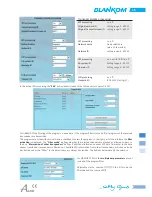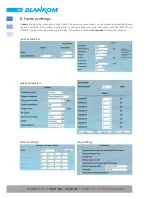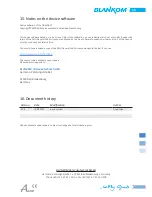
25
7.2.10 Menu ”NIT”
The NIT processing for all to a headend associated devices of the A-QAMOS and QAMOS product group can be done in
2 ways: as an automatic or manual NIT processing.
The simplest and by installation and support expense safest way is the automatic NIT processing. The precondition is
that all to the headend associated above mentioned devices have a different IP address and an Ethernet switch must
be connected to each other. The NIT settings must be made here only in one of the above mentioned devices of the
headend and after confirmation they are automatically included of all other devices.
The Ethernet connection among each other is not necessary for the manual NIT processing, but the settings must be
made or maintained
separately in each device
of the headend, which means a much higher expense.
To start the NIT processing it is first necessary to put together the headend in the user interface:
Menu
Setup
→
Headend
“Read“
or in the case of factory setting of the device:
Menu
Overview
→
Headend “Read“
.
All devices of the A-QAMOS and QAMOS product group are listed that are within the network. If there is no network
connection between the mentioned devices (the case of manual NIT processing), here only this one device appears on
which the settings are being implemented. The next step, all mentioned devices are selected, which should belong to
the headend (in the case of the manual NIT processing the device itself) and the selection has to be confirmed with the
“
Send
“
button.
7.2.10.1 Automatic NIT processing
As explained above, all devices of the A-QAMOS and QAMOS product group of the headend must be connected via
an Ethernet switch for automatic NIT processing. The creation or editing of the NIT settings must only be done on one
device of the headend and is then applied from all other devices automatically.
It presents the last created NIT table of the whole headend with continuous listing of the following parameters: transport
stream ID, original network ID, output frequency in kHz, QAM constallation, symbol rate in kSps, insert and delete fields
It presents the last created NIT table of the whole headend with continuous listing of the following parameters: transport
stream ID, original network ID, output frequency in kHz, QAM constallation, symbol rate in kSps, insert and delete fields.


























